![Brotzmann, Peter / Milford Graves / William Parker: Historic Music Past Tense Future [VINYL 2 LPs] (Black Editions Archives) Brotzmann, Peter / Milford Graves / William Parker: Historic Music Past Tense Future [VINYL 2 LPs] (Black Editions Archives)](https://www.teuthida.com/productImages/misc4/31370.jpg)
A rare recording for Milford Graves in 2002 and a spectacular meeting between three free jazz legends--Peter Brotzmann on sax and clarinet, William Parker on bass and Doussn'Gouni, and Graves on drums and voice--recording in the front room of CBGBs for four magnificent and passionate improvisations, a wild affair captured by the Eremite Mobile Unit and finally released as a double LP.
Out of Stock
Quantity in Basket: None
Log In to use our Wish List
Shipping Weight: 32.00 units
Sample The Album:
Peter Brotzmann-reeds
Milford Graves-drums, vocals, dancing
William Parker-bass, Doussn'Gouni
Click an artist name above to see in-stock items for that artist.
UPC: 769791980402
Label: Black Editions Archives
Catalog ID: BEA 001LP
Squidco Product Code: 31370
Format: 2 LPs
Condition: New
Released: 2022
Country: USA
Packaging: LP - Gatefold w/ 2 LPs
Recorded at CB's 313 Gallery, in New York City, on March 29th, 2002, by Eremite Mobile Unit.
"The first ever album to feature the meeting of Peter Brötzmann, Milford Graves, and William Parker. Three of the towering figures in the history of free jazz forge an incredibly vital free music born from lifetimes of uncompromising, ceaseless artistry.
Historic Music Past Tense Future is the inaugural release by Black Editions Archive and the first in a series of records that will present previously unreleased works featuring Milford Graves."-Black Editions
"2002-03-29, in the front room of CBGBs, fourteen years after their last performance together, three of the defining musicians in Free Jazz history convened for a third and final time. Peter Brötzmann had once again successfully talked his way into the U.S. without a visa to play this concert (organized by Arts for Art) and concerts with a historic drummer of a different era, Walter Perkins (organized by eremite).
On March 31 and April 1, Brötzmann and Perkins recorded their duo album The Ink Is Gone (2003). William Parker had just returned from concerts in Italy with the David S. Ware Quartet. On April 2 and 3 he debuted his 'Curtis Mayfield Inside Songs' project in Boston & Amherst. And he still found time to sit-in for the entire March 30 Brötzmann/Perkins Amherst Meetinghouse gig.
Scarcely to be found on bandstands and an even rarer presence on record, Milford Graves was a different story, a state of affairs that in 1995 prompted Thurston Moore to proclaim Graves 'a living myth.' Between 1999 and 2015, Graves appears on just six recordings, two of those solo; Brötzmann and Parker combined made half as many records the same week as this gig . . .
The Eremite Mobile Unit happened to be in the house March 29. The trio performed on a small riser facing the front door of CBGBs, with Graves' hand-painted, Orisha-adorned double bass drum kit, captured in its full thunderous glory on this recording, occupying most of the available space . . . For this rather hastily set-up recording, Parker's small amp was placed on a barstool behind Graves' kit, yet you still clearly feel and hear Parker's vivid contributions.
By 2002 Milford Graves was four decades into developing and refining his radical approach to drumming. Graves' unique and unbounded creativity across multiple mediums is only recently entering the early stages of wider discovery and appreciation . . . The music here comes from a moment of relative high visibility for the free jazz continuum. Brötzmann and Parker, among others, were taking it to the people through relentless touring..."-Michael Ehlers
Artist Biographies
• Show Bio for Peter Brotzmann "Born Remscheid, Germany on 6 March 1941; soprano, alto, tenor, baritone and bass saxophones, a-clarinet, e-flat clarinet; bass clarinet, tarogato. Peter Brötzmann's early interest was in painting and he attended the art academy in Wuppertal. Being very dissatisfied with the gallery/exhibition situation in art he found greater satisfaction playing with semi-professional musicians, though continued to paint (as well as retaining a level of control over his own records, particularly in record sleeve/CD booklet design). In late 2005 he had a major retrospective exhibition jointly with Han Bennink - two separate buildings separated by an inter-connecting glass corridor - in Brötzmann's home town of Remscheid. Self-taught on clarinets, he soon moved to saxophones and began playing swing/bebop, before meeting Peter Kowald. During 1962/63 Brötzmann, Kowald and various drummers played regularly - Mingus, Ornette Coleman, etc. - while experiencing freedoms from a different perspective via Stockhausen, Nam June Paik, David Tudor and John Cage. In the mid 1960s, he played with American musicians such as Don Cherry and Steve Lacy and, following a sojourn in Paris with Don Cherry, returned to Germany for his unorthodox approach to be accepted by local musicians like Alex von Schlippenbach and Manfred Schoof. The trio of Peter Brötzmann, Peter Kowald and Sven-Ake Johansson began playing in 1965/66 and it was a combination of this and the Schoof/Schlippenbach Quintet that gave rise to the first Globe Unity Orchestra. Following the self-production of his first two LPs, For Adolphe Sax and Machine gun for his private label, BRÖ, a recording for Manfred Eicher's 'Jazz by Post' (JAPO) [Nipples], and a number of concert recordings with different sized groups, Brötzmann worked with Jost Gebers and started the FMP label. He also began to work more regularly with Dutch musicians, forming a trio briefly with Willem Breuker and Han Bennink before the long-lasting group with Han Bennink and Fred Van Hove. As a trio, and augmented with other musicians who could stand the pace (e.g. Albert Mangelsdorff on, for example, The Berlin concert), this lasted until the mid-1970s though Brötzmann and Bennink continued to play and record as a duo, and in other combinations, after this time. A group with Harry Miller and Louis Moholo continued the trio format though was cut short by Miller's early death. The thirty-plus years of playing and recording free jazz and improvised music have produced, even on just recorded evidence, a list of associates and one-off combinations that include just about all the major figures in this genre: Derek Bailey (including performances with Company (e.g. Incus 51), Cecil Taylor, Fred Hopkins, Rashied Ali, Evan Parker, Keiji Haino, Misha Mengelberg, Anthony Braxton, Marilyn Crispell, Andrew Cyrille, Phil Minton, Alfred 23 Harth, Tony Oxley. Always characterised as an energy player - and the power-rock setting of Last Exit with Ronald Shannon Jackson, Sonny Sharock and Bill Laswell, or his duo performances with his son, Casper, did little to disperse this conviction - his sound is one of the most distinctive, life-affirming and joyous in all music. But the variety of Brötzmann's playing and projects is less recognised: his range of solo performances; his medium-to-large groups and, in spite of much ad hoc work, a stability brought about from a corpus of like- minded musicians: the group Ruf der Heimat; pianist Borah Bergman; percussionist Hamid Drake; and Die like a dog, his continuing tribute to Albert Ayler, with Drake, William Parker and Toshinori Kondo. Peter Brötzmann continues a heavy touring schedule which, since 1996 has seen annual visits to Japan and semi-annual visits to the thriving Chicago scene where he has played in various combinations from solo through duo (including one, in 1997, with Mats Gustafsson) to large groups such as the Chicago Octet/Tentet, described below. He has also released a number of CDs on the Chicago-based Okka Disk label, including the excellent trio with Hamid Drake and the Moroccan Mahmoud Gania, at times sounding like some distant muezzin calling the faithful to become lost in the rhythm and power of the music. The "Chicago Tentet" was first organized by Brötzmann with the assistance of writer/presenter John Corbett in January 1997 as an idea for a one-time octet performance that included Hamid Drake and Michael Zerang (drums), Kent Kessler (bass) and Fred Lomberg-Holm (cello), Ken Vandermark and Mars Williams (reeds), and Jeb Bishop (trombone). The first meeting was extremely strong and warranted making the group an ongoing concern and in September of that same year the band was expanded to include Mats Gustafsson (reeds) and Joe McPhee (brass) as permanent members (with guest appearances by William Parker (bass), Toshinori Kondo (trumpet/electronics), and Roy Campbell (trumpet) during its tenure) - all in all a veritable who's who of the contemporary improvising scene's cutting edge. Though the Tentet is clearly led by Brötzmann and guided by his aesthetics, he has been committed to utilizing the compositions of other members in the ensemble since the beginning. This has allowed the band to explore an large range of structural and improvising tactics: from the conductions of Mats Gustafsson and Fred Lonberg-Holm, to the vamp pieces of Michael Zerang and Hamid Drake, to compositions using conventional notation by Ken Vandermark and Mars Williams, to Brötzmann's graphic scores - the group employs almost every contemporary approach to composing for an improvising unit. This diversity in compositional style, plus the variety in individualistic approaches to improvisation, allows the Tentet to play extremely multifaceted music. As the band moves from piece to piece, it explores intensities that range from spare introspection to all out walls of sound, and rhythms that are open or free from a steady pulse to those of a heavy hitting groove. It is clear that the difficult economics of running a large band hasn't prevented the group from continuing to work together since its first meeting. Through their effort they've been able to develop an ensemble sound and depth of communication hard to find in a band of any size or style currently playing on the contemporary music scene." ^ Hide Bio for Peter Brotzmann • Show Bio for Milford Graves "Milford Graves (born August 20, 1941 in Queens, New York) is an American jazz drummer and percussionist, most noteworthy for his early avant-garde contributions in the early 1960s with Paul Bley and the New York Art Quartet alongside John Tchicai, Roswell Rudd, and Reggie Workman. He is considered to be a free jazz pioneer, liberating the percussion from its timekeeping role. In fact, many of his music contemporaries, musician inspirees, and fans worldwide would argue that Graves is perhaps the most influential known musician in the development and continuing evolution of free-jazz/avant-garde music, to date. Milford Graves taught at Bennington College, in Bennington, Vermont, as a full-time professor from 1973 until 2011, when he was awarded Emeritus status. Initially playing timbales as a kid growing up in Queens, Graves has worked as a sideman and session musician with a variety of jazz musicians throughout his career, including Pharoah Sanders, Rashied Ali, Albert Ayler, Don Pullen, Kenny Clarke, Don Moye, Andrew Cyrille, Philly Joe Jones, Eddie Gómez, and John Zorn. He has invested his time in research within the field of healing through music. In 2013, Milford Graves along with Drs.Carlo Tremolada and Carlo Ventura received a patent for an invention that relates to a process of preparing a non-expanded tissue derivative, that is not subjected to cell proliferation in vitro, which has a vascular-stromal fraction enriched in stem and multipotent elements, such as pericytes and/or mesenchymal stem cells, or for preparing non-embryonic stem cells obtained from a tissue sample or from such tissue derivative, wherein the tissue derivative or such cells are subjected to vibrations derived from a heart sound to control the degree of differentiation or possible differentiation of the stem and multipotent elements into several other types of cells and optimize their potency. The invention relates also to a device for carrying out the process, to stem cells obtainable by the process as well as a drug for the regeneration of an animal tissue." ^ Hide Bio for Milford Graves • Show Bio for William Parker "William Parker is a bassist, improviser, composer, writer, and educator from New York City, heralded by The Village Voice as, "the most consistently brilliant free jazz bassist of all time." In addition to recording over 150 albums, he has published six books and taught and mentored hundreds of young musicians and artists. Parker's current bands include the Little Huey Creative Music Orchestra, In Order to Survive, Raining on the Moon, Stan's Hat Flapping in the Wind, and the Cosmic Mountain Quartet with Hamid Drake, Kidd Jordan, and Cooper-Moore. Throughout his career he has performed with Cecil Taylor, Don Cherry, Milford Graves, and David S. Ware, among others." ^ Hide Bio for William Parker
11/20/2024
Have a better biography or biography source? Please Contact Us so that we can update this biography.
11/20/2024
Have a better biography or biography source? Please Contact Us so that we can update this biography.
11/20/2024
Have a better biography or biography source? Please Contact Us so that we can update this biography.
Track Listing:
SIDE A
1. Side A 15:33
SIDE B
1. Side B 18:25
SIDE C
1. Side C 17:25
SIDE D
1. Side D 16:42
Vinyl Recordings
Improvised Music
Jazz
Free Improvisation
European Improvisation, Composition and Experimental Forms
NY Downtown & Metropolitan Jazz/Improv
Trio Recordings
Peter Brotzmann
Parker, William
Staff Picks & Recommended Items
Search for other titles on the label:
Black Editions Archives.


![Brotzmann, Peter / Milford Graves / William Parker: Historic Music Past Tense Future [VINYL 2 LPs] (Black Editions Archives) Brotzmann, Peter / Milford Graves / William Parker: Historic Music Past Tense Future [VINYL 2 LPs] (Black Editions Archives)](https://www.teuthida.com/productImages/full/31370.Full.jpg)
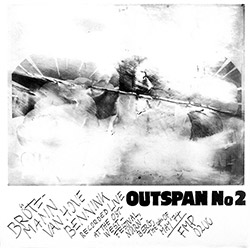
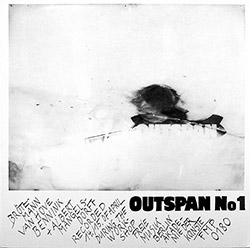

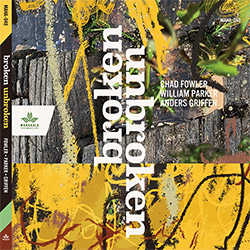

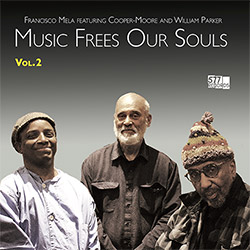
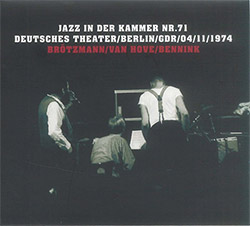
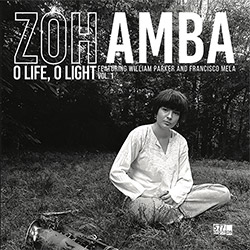
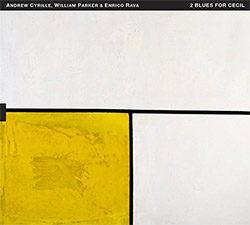

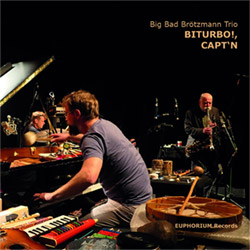






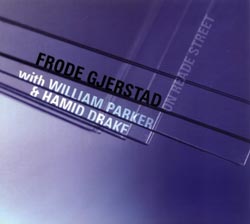




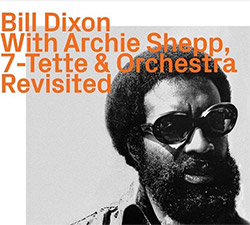

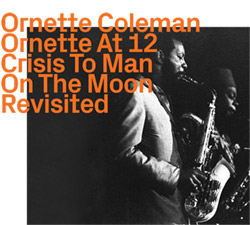
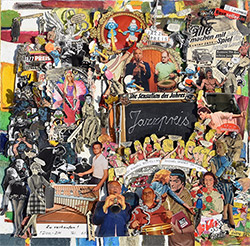


![Guy, Barry / Ken Vandermark: Occasional Poems [2 CDs]](https://www.teuthida.com/productImages/misc4/34849.jpg)
![Novoa / Carter / Mela Trio: Vol.1 [VINYL]](https://www.teuthida.com/productImages/misc4/35236.jpg)


![Elephant9 : Mythical River [VINYL]](https://www.teuthida.com/productImages/misc4/34624.jpg)
![Evans, Peter (Evans / Eldh / Black): Extra [VINYL]](https://www.teuthida.com/productImages/misc4/35279.jpg)

![McPhee, Joe: Straight Up, Without Wings [BOOK]](https://www.teuthida.com/productImages/misc4/35454.jpg)
![Jeck, Philip: rpm [2 CDs]](https://www.teuthida.com/productImages/misc4/35455.jpg)













![Barker / Parker / Irabagon: Bakunawa [VINYL]](https://www.teuthida.com/productImages/misc4/35533.jpg)
![Blaser, Samuel / Marc Ducret / Peter Bruun: Dark Was The Night, Cold Was The Ground [VINYL 10-inch]](https://www.teuthida.com/productImages/misc4/35492.jpg)








![Warren, Kenny (Warren / Hoffman / Ellman): Sweet World [VINYL]](https://www.teuthida.com/productImages/misc4/35451.jpg)




![Blake, Ran / Dave Knife Fabris: Live Amsterdam 2006, First Visit [CD + POSTCARDS]](https://www.teuthida.com/productImages/misc4/35275.jpg)













![DNS: Taking Big Bites Of The Khandas Three Cafes Deep [2 CDs]](https://www.teuthida.com/productImages/misc4/35334.jpg)




![Cleaver, Gerald: The Process [VINYL]](https://www.teuthida.com/productImages/misc4/34966.jpg)




![Alva Noto: HYbr:ID II [VINYL 2 LPs]](https://www.teuthida.com/productImages/misc4/35201.jpg)

![Baron, Derek / Luke Martin: Distinct and Concealed [CASSETTE + DOWNLOAD]](https://www.teuthida.com/productImages/misc4/35079.jpg)

![Lyle, Erica Dawn : Colonial Motels [CASSETTE + DOWNLOAD]](https://www.teuthida.com/productImages/misc4/35080.jpg)









![Sanna, Claudio: Compositori Sardi Contemporanei II [2 CDs]](https://www.teuthida.com/productImages/misc4/35317.jpg)







![Zurria, Manuel: Fame di Vento [3 CDs]](https://www.teuthida.com/productImages/misc4/35167.jpg)

![Granberg, Magnus / Nattens Inbrott / Skogen: Holde Traume, Kehret Wieder! [2 CDs]](https://www.teuthida.com/productImages/misc4/35038.jpg)
![Frey, Jurg: Outermost Melodie [2 CDs]](https://www.teuthida.com/productImages/misc4/35039.jpg)

![Pavone, Jessica: Reverse Bloom [VINYL]](https://www.teuthida.com/productImages/misc4/34895.jpg)




![Modney (Modney / Wooley / Gentile / Roberts / Pluta / Symthe / ...): Ascending Primes [2 CDs]](https://www.teuthida.com/productImages/misc4/34852.jpg)









![Elephant9 with Terje Rypdal: Catching Fire [VINYL 2 LPs]](https://www.teuthida.com/productImages/misc4/35355.jpg)
![Deerlady (Obomsawin, Mali / Magdalena Abrego): Greatest Hits [VINYL]](https://www.teuthida.com/productImages/misc4/34876.jpg)




![Haino, Keiji: Black Blues [2 CDs]](https://www.teuthida.com/productImages/misc4/35109.jpg)



![Surplus 1980: Illusion of Consistency [CD]](https://www.teuthida.com/productImages/misc4/35069.jpg)
![Staiano, Moe: Away Towards the Light [VINYL + DOWNLOAD]](https://www.teuthida.com/productImages/misc4/35037.jpg)



![Caveira (Gomes / Sousa / Abras / Ferrandini): Ficar Vivo [VINYL]](https://www.teuthida.com/productImages/misc4/34643.jpg)
![Gregg, J. J. / David Van Auken: Lunar Prairie [CD w/ DOWNLOAD]](https://www.teuthida.com/productImages/misc4/34611.jpg)

![Coultrain: Mundus [VINYL]](https://www.teuthida.com/productImages/misc4/32439.jpg)
![Mattin: Songbook #6 [VINYL]](https://www.teuthida.com/productImages/misc4/27317.jpg)
![Punkappella: Wake Up [7-inch VINYL]](https://www.teuthida.com/productImages/misc4/17519.jpg)
![Residents, The: WARNING: UNiNC.: Live And Experimental Recordings 1971-1972 [VINYL 2 LPs]](https://www.teuthida.com/productImages/misc4/31521.jpg)
![Coultrain: Phantasmagoria [VINYL]](https://www.teuthida.com/productImages/misc4/30142.jpg)
![Lennon, Sean Ono: Asterisms [VINYL]](https://www.teuthida.com/productImages/misc4/34517.jpg)

![Coley, Byron: Dating Tips for Touring Bands [VINYL]](https://www.teuthida.com/productImages/misc4/17906.jpg)

![Lost Kisses: My Life is Sad & Funny [DVD]](https://www.teuthida.com/productImages/misc4/lostKissesDVD.jpg)